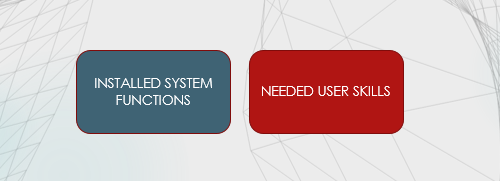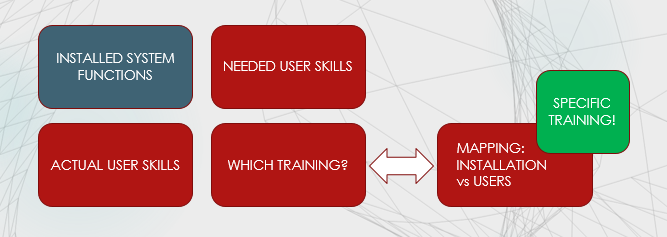Standard training vs customized
Wíth this approach to new system status we can also easily address updated processes and methods, or new product lines/configurations. With this approach we can map tool skills and relevant specific tool functionality, plus appropriate sections of processes and methods, to specific system user roles.







